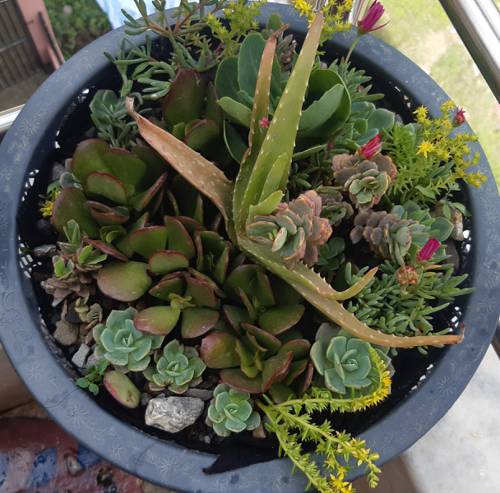
FAQ About Indoor Plant Biodiversity Conservation

What is indoor plant biodiversity conservation?
Indoor plant biodiversity conservation refers to the practice of preserving and ensuring a wide variety of genetic and species diversity among plants that are grown indoors. This includes promoting the ecological health of indoor plant environments by encouraging a mix of different species and genetic variations within those species.

Why is biodiversity important for indoor plants?
Biodiversity is important for indoor plants because it helps create resilient plant ecosystems that can withstand pests, diseases, and changes in the environment. A diverse plant community can improve air quality, enhance aesthetic appeal, and contribute to a healthier living space.

How can I promote biodiversity among my indoor plants?
Promote biodiversity by selecting a variety of plant species with different growth shapes, colors, and heights. Consider native species and rare varieties to increase genetic diversity. Additionally, rotate plants regularly and ensure diverse environmental conditions within your indoor space.

What role do native plant species play in indoor biodiversity conservation?
Native plant species are well adapted to local conditions and can thrive with minimal care. Incorporating native plants into indoor collections can reduce maintenance needs and help maintain ecological balance, supporting local wildlife even in indoor settings.

Can indoor plants contribute to global biodiversity conservation efforts?
Yes, indoor plants can contribute to global biodiversity conservation by acting as repositories for rare or endangered species. Cultivating diverse collections indoors can help protect species that are threatened in their natural habitats and support global conservation goals.

What are some common challenges in conserving indoor plant biodiversity?
Common challenges include limited space, varying environmental conditions, pests, and diseases. Additionally, sourcing rare or genetically diverse plants and maintaining their growth requirements can pose difficulties for indoor gardeners.

How can technology aid in the conservation of indoor plant biodiversity?
Technology can assist by providing tools for monitoring plant health, optimizing growing conditions, and collecting data on plant genetics. Apps and smart devices can help manage plant care, identify plant species, and even automate watering and lighting to optimize biodiversity preservation.

Are there specific plants known for enhancing indoor plant biodiversity?
Ferns, orchids, and succulents are popular for enhancing biodiversity due to their varied forms and adaptability indoors. Diverse varieties of these plants can contribute significantly to genetic and species diversity in indoor environments.

What are the benefits of having a genetically diverse indoor plant collection?
A genetically diverse plant collection can prevent the monoculture effect, reduce the risk of pest infestations, and increase resilience to environmental changes. This diversity can also result in a more visually appealing array of foliage and flowers, enhancing indoor spaces.

How does biodiversity impact the ecological contributions of indoor plants?
Increased biodiversity among indoor plants can boost ecological contributions such as air purification, humidity regulation, and the creation of microhabitats for beneficial insects. More diverse plant environments mimics natural ecosystems, improving their function and health.

Can indoor plant biodiversity aid in pest control?
Yes, a diverse plant community can naturally attract beneficial insects that help control pest populations. Certain plants also emit compounds that can deter pests, contributing to a balanced indoor ecosystem with minimal reliance on chemical pesticides.

What are some methods to preserve genetic diversity in indoor plant cultivation?
Methods to preserve genetic diversity include practicing selective breeding, utilizing seed banks, and exchanging plant cuttings or seeds with other gardeners. It's also important to record plant lineage and propagation methods to maintain genetic lines.

Can indoor plants help in the conservation of endangered species?
Indoor plant cultivation can support the conservation of endangered species by providing a controlled and safe environment where rare species can be grown and propagated, potentially reintroducing them into the wild as conditions allow.

How do indoor plants contribute to the psychological well-being of humans?
Indoor plants contribute to psychological well-being by reducing stress, improving moods, and enhancing concentration and productivity. The presence of diverse plant species can create a calming and inspiring atmosphere, further benefiting mental health.

What is the impact of monoculture in indoor gardening?
Monoculture, the cultivation of a single plant species, can lead to a lack of resilience against pests and diseases. It can also reduce ecological functions and the overall aesthetic appeal of indoor green spaces, making them less beneficial for both plant and human health.

Are there any organizations or resources dedicated to indoor plant biodiversity?
Yes, there are several organizations such as the International Aroid Society and the Gesneriad Society that promote the conservation and study of specific plant families. Online forums and plant exchange networks also provide resources and support for biodiversity enthusiasts.

How can seed banks be used in indoor plant biodiversity conservation?
Seed banks store seeds of various plant species, preserving genetic diversity for future use. Gardeners can use them to access rare plant varieties and introduce new genetic material into their indoor plant collections, aiding biodiversity conservation efforts.

What are some signs that my indoor plant ecosystem lacks biodiversity?
Signs of a lack of biodiversity might include a uniform appearance among plants, high susceptibility to pest infestations, poor plant health, and reduced ecological functions like air purification. Introducing a more varied plant selection can help address these issues.

How does climate change impact indoor plant biodiversity?
Climate change can affect indoor plant biodiversity by altering temperature and humidity levels, potentially making it difficult for certain species to survive indoors. Adapting plant choices to accommodate changing conditions is crucial for maintaining biodiversity.

What role do botanical gardens play in indoor plant biodiversity conservation?
Botanical gardens play a critical role by offering educational resources, housing diverse plant species, and conducting research on plant conservation. They often serve as hubs for conservation efforts and can provide rare and diverse plant varieties for indoor gardeners.
